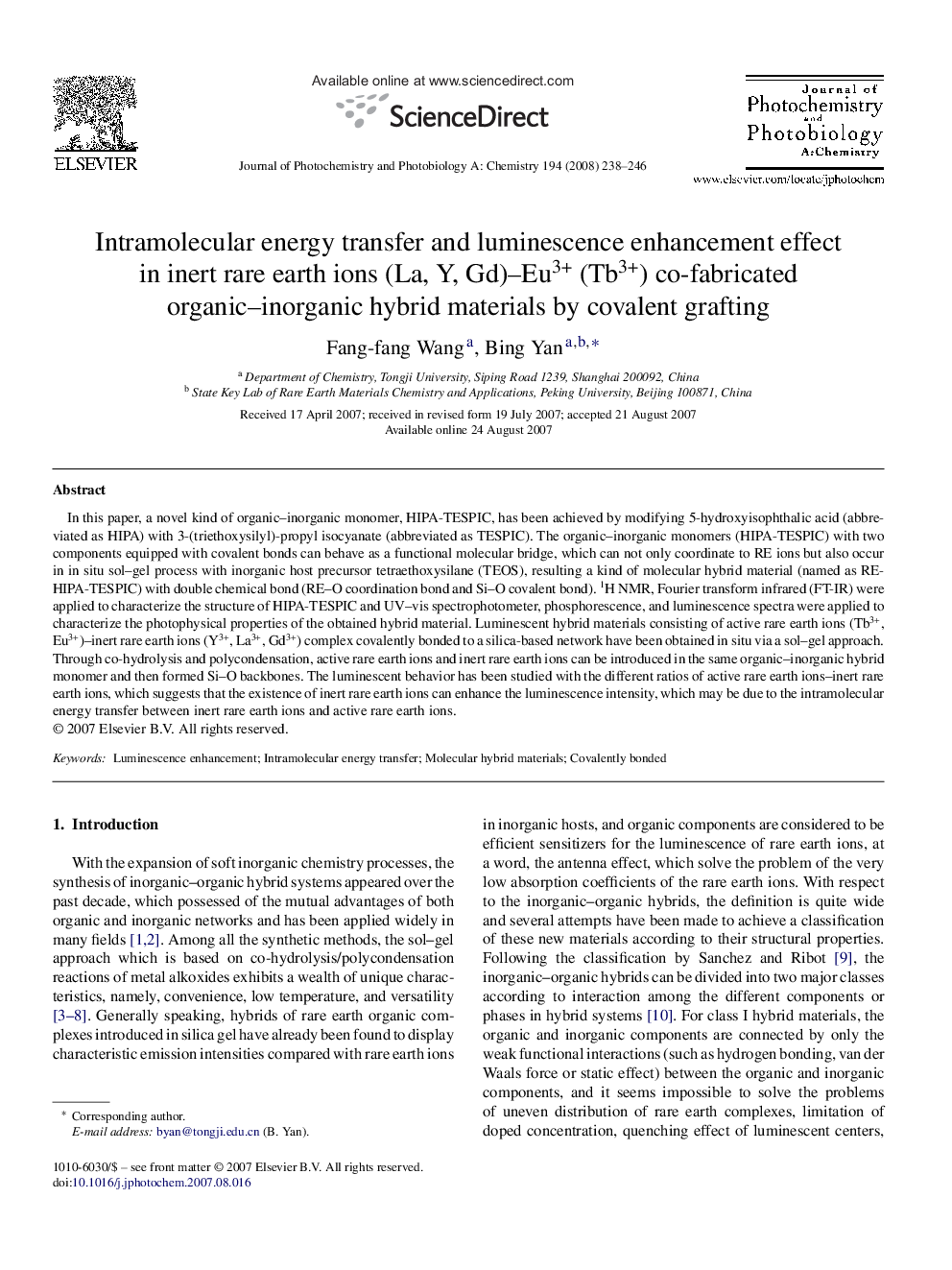| Article ID | Journal | Published Year | Pages | File Type |
|---|---|---|---|---|
| 29165 | Journal of Photochemistry and Photobiology A: Chemistry | 2008 | 9 Pages |
In this paper, a novel kind of organic–inorganic monomer, HIPA-TESPIC, has been achieved by modifying 5-hydroxyisophthalic acid (abbreviated as HIPA) with 3-(triethoxysilyl)-propyl isocyanate (abbreviated as TESPIC). The organic–inorganic monomers (HIPA-TESPIC) with two components equipped with covalent bonds can behave as a functional molecular bridge, which can not only coordinate to RE ions but also occur in in situ sol–gel process with inorganic host precursor tetraethoxysilane (TEOS), resulting a kind of molecular hybrid material (named as RE-HIPA-TESPIC) with double chemical bond (RE–O coordination bond and Si–O covalent bond). 1H NMR, Fourier transform infrared (FT-IR) were applied to characterize the structure of HIPA-TESPIC and UV–vis spectrophotometer, phosphorescence, and luminescence spectra were applied to characterize the photophysical properties of the obtained hybrid material. Luminescent hybrid materials consisting of active rare earth ions (Tb3+, Eu3+)–inert rare earth ions (Y3+, La3+, Gd3+) complex covalently bonded to a silica-based network have been obtained in situ via a sol–gel approach. Through co-hydrolysis and polycondensation, active rare earth ions and inert rare earth ions can be introduced in the same organic–inorganic hybrid monomer and then formed Si–O backbones. The luminescent behavior has been studied with the different ratios of active rare earth ions–inert rare earth ions, which suggests that the existence of inert rare earth ions can enhance the luminescence intensity, which may be due to the intramolecular energy transfer between inert rare earth ions and active rare earth ions.
